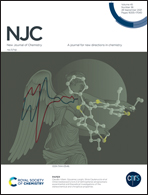The mechanism and regulation of the electrosorption selectivity of inorganic anions during capacitive deionization
Abstract
Capacitive deionization (CDI) is an efficient new technology that can be used to remove charged pollutants. However, differences in the electrode selectivity for different ions limit its further application. Therefore, the electrosorption behavior and selectivity of four anions in a CDI system with activated carbon electrodes were investigated using mixed solutions. The results showed that the adsorption capacities and selectivities of the anions varied due to differences in their hydration energy and valence. The preferential electrosorption order was as follows: NO3− > Cl− > SO24− > phosphate (P). In addition, the competitive mechanism between different anions and P was studied. P competed with SO24− the most for electrosorption sites due to their spatial similarity. However, because the NO3− adsorption capacity was the highest, P had the lowest electrosorption selection coefficient when it coexisted with NO. Finally, the mechanism of the electrosorption selectivity was verified. The results indicated that the electrosorption selectivity of P was improved by decreasing the voltage to weaken the competition between P and other anions for sites and by adjusting the pH to optimize the hydration energy and electronegativity of P. This research may provide readers with a deeper understanding of electrosorption selectivity.



 Please wait while we load your content...
Please wait while we load your content...